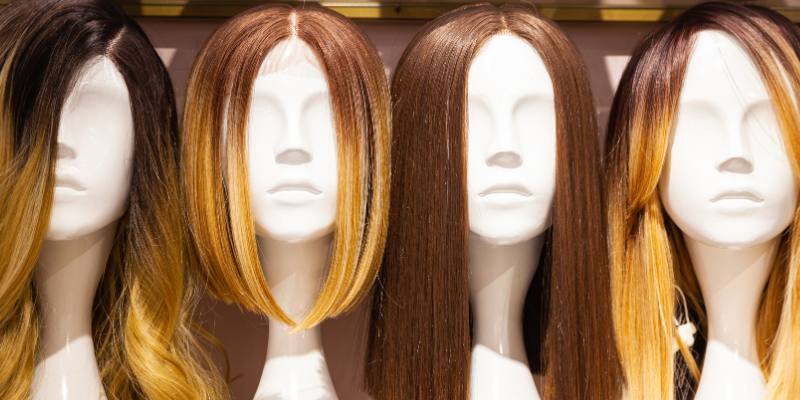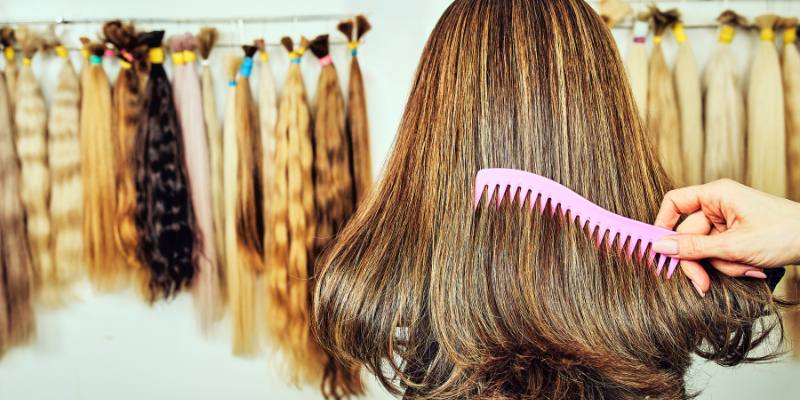Hair density refers to the number of strands of hair that grow per square inch of your scalp.
Your hair can be categorized in a variety of ways, including length, color, texture, coarseness, and density.
It is optional to use a microscope to count individual strands of hair to estimate its density. Knowing whether your hair is thin or thick will help you select what sort of hair products to use.
In this article, we'll cover all you need to know about density, wig density, and how to select the ideal density for your next wig.

What’s Typical Hair Density?
Our scalp typically contains between 80,000 and 120,000 hairs.
Your hair density is typically strongest at your vertex, located at the back of your head and also known as your crown. Hair density varies significantly across individuals and is ethnically influenced.
There is no such thing as an excessively high or low hair density, and it is not indicative of your general health.
However, persons with dietary deficits may have hair loss, lowering total hair density. In 2017, a researcher compared the hair density of Hispanics to that of Africans and Caucasians.
The study discovered that those of African heritage had the lowest hair density while Caucasians had the greatest.
What is Wig Density?
Wigs have existed for ages.
They are getting increasingly popular as more ladies like to create a trendy image with them. Wearing a wig can make someone seem younger, but it can also assist to cover hair loss, particularly for people undergoing chemotherapy.
However, choosing a wig that meets your requirements may be complex, and wig density is one of the essential components of any unit since if you don't select the proper hair density, it will affect everything from your wig maintenance routine to how the wig lays.
Wig density refers to how thick or thin your hair on a wig will be. Wig density is commonly assessed in percentages, with values ranging from 100% to 220% or higher. The rate reflects how much hair is on the wig in comparison to the density of actual human hair.
For example, a wig with 100% density would have the same density as actual human hair, but a wig with 150% density would have 1.5 times as much hair.
Hair Density of Hair Wigs and Hair Extensions
Manufacturers often utilize generic wig density parameters to help individuals pick a wig more readily.
The density may vary slightly across manufacturers depending on the type and grade of hair used. The wig density table is intended to help you make an informed selection and feel good about your investment.

As you look for the best human hair wig, bear in mind that units created from 100% virgin human hair will provide the greatest quality and come closest to imitating the feel of real hair.
Extra Light Hair Density: 100%
This density is regarded as the lightest and most appropriate for persons with naturally light hair density. Some scalp may show, but it may still seem natural.Light Hair Density: 130%
This is another excellent choice for folks who have naturally thin hair without much volume. It is a popular choice for those whose hair has thinned out.Light to Medium Density: 150%
This wig density remains on the light side, but it provides far more covering than 80% or less. It's an excellent choice if you have naturally thin, fine hair.Medium Density: 180%
Medium-density wigs are the most similar to the density of actual human hair, making them a very popular choice. It gives a good volume for a more realistic appearance.Heavy Density: 220%
A thick wig density will work best if you want lots of volume. It gives complete fullness without being overbearing. Think photoshoots.Why Does Wig Density Matter?
Wigs are one of the most trustworthy hair replacement methods without surgery.
So, it is important to know the importance of wig’s density before buying it.
The perfect density guarantees that the wig matches the density of your real hair. This is important for a smooth and real appearance of a wig.
Always choose a perfect wig density to create a desired look.
Have a look at the appearance of different densities of wigs:
- Low-Density Wigs: They have a subtle and natural look. It simulates fine and thin real hair.
- Medium Density Wigs: They are primarily balanced and add fullness to your real hair without looking too thick.
- High-Density Wigs: They provide maximum volume and are best for people who want dramatic hair.

How to Choose the Perfect Density for Your Next Wig?
There is no greater optimum density.
Everything boils down to the appearance you want to accomplish. If you desire additional fullness, you'll most likely choose a larger density, such as 150% or higher.
If you want to find the proper density, here are a few factors to consider:
Your Natural Hair Density
This is mainly required when trying to integrate the hair with your own natural hair.
You should select the density that most nearly matches your hair.
Also, if you want to appear as natural as possible, your hair should have the same density as your actual hair.
Hairstyle
Depending on your desired style, you may want more or less density.
A long, straight style typically requires a higher density to seem full, but a curly unit may be less dense and yet appear full.
Your Face Shape
When choosing a wig, one of the most important things to consider is your facial shape.
If you have a tiny face, a dense wig may obscure your features and appear unnatural.
If you have a bigger face, a denser wig might assist in balancing your features and provide a more symmetrical appearance.
Personal Preferences
Personal preference is another consideration when choosing density. Some ladies may prefer thicker wigs, while others may choose thinner, more economical options.
Everyone will choose 100% human wigs according to their tastes.

Length
The length of your wig's hair is an important factor to consider while deciding on its density.
Certain wig densities will seem different on various hair lengths. While the density you choose should be based on your particular preferences, the following tips can help you choose one that will work well with your wig length.
- Short (6 inches to 10 inches): For short haircuts, we recommend using a density of 120-150%. These densities will seem the most natural and limit the likelihood of your designs appearing excessively big.
- Medium (12 to 16 inches): For medium-length styles, we recommend a density of 130–180%. Choose your density based on how much volume you desire.
- Long (18 to 22 inches): For long hair, more density is preferred to provide adequate volume and fullness. Choose a density of 150 to 250%.
- Extra Long (24 inches to 30+ inches): For extra-long hair, use 250% density. This will keep your hair full from root to tip.
How To Take Care Of Different Wig Density?
Handling and Storage
- Light-density wigs: Handle cautiously to minimize tangling, and store in a cool, dry location to prevent frizz.
- Medium and heavy-density wigs: Use a wide-tooth comb or wig brush to avoid hair breakage. Store the wig on a stand to keep it in form and prevent tangling.
Cleaning and Washing
- Light-density wigs: Wash less regularly to keep their delicate appearance. To clean gently, apply a gentle, sulfate-free shampoo.
- Medium and heavy-density wigs: Wash more frequently, especially if exposed to styling agents. Use wig conditioner to keep the hair silky and manageable.
Styling
- Light-density wigs: Pay attention to avoid straining the hair. If you're styling using hot equipment, use modest heat settings.
- Medium and heavy-density wigs: These provide greater styling possibilities. Use heat-protective products while styling with heat.
Maintenance Routine
- Light-density wigs: Check for loose knots and shedding on a regular basis.
- Medium and heavy-density wigs: Check the wig cap for indications of wear and damage.

Medical Wig Consultation
At Wig Medical, we're all about giving you personalized care for your hair loss journey.
Our team knows how tough it can be, so we're here to offer advice and support that fits your needs.
We keep up with the latest trends in hair restoration, and our friendly staff will listen to you, understand your situation, and help you find the best option, whether it's a medical wig, topper, or other hairpieces.
We want to make the process easy and comfortable for you so you can trust us to guide you every step of the way.
See us at Wig Medical, and let's find the perfect solution for you!
Conclusion
Knowing your hair density will allow you to make more informed decisions about the styles you wear, the products you use, and which hairstyles and haircuts are most suited to you.
Understanding wig density is a crucial aspect of selecting a wig, but you also want to ensure that you're receiving the greatest hair with the longest lifespan.
To do this, you'll need Wig Medical, human hair wigs, and toppers.

